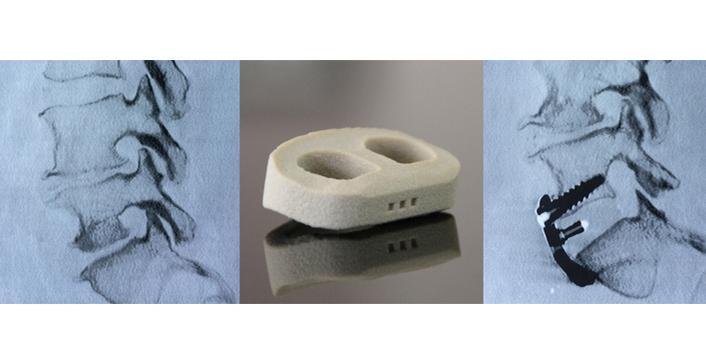A surgeon in Lyon, France performed the world’s first spinal-fusion surgery recently. Dr. Vincent Fiere performed the surgery at the Hospital Jean Mermoz using customized, 3D-printed spine cages. Fiere performed the
“The intersomatic cage, specifically ‘printed’ for my patient, positioned itself automatically in the natural space between the vertebrae and molded ideally with the spine by joining intimately with the end plates, despite their relative asymmetry and irregularity,” said Dr. Fiere.
The intersomatic cage that Dr. Fiere used was the UNiD ALIF. It was created by Medicrea, a French company that specializes in the design, development, manufacture and
“I could also very precisely perform the restoration of the disc height and simultaneously correct the degree of lumbar lordosis using plans I had made several days before the operation with the help of the Medicrea Surgimap software tool.”
Medicrea’s software and research may eventually lead to additional implantable devices that are capable of reproducing pieces of the spine. These future developments seem promising according to Denys Sournac, Medicrea’s chairman.
“Continuing our trajectory since the launch of our PASS LP UNiD rods which are made to measure for each patient, Medicrea confirms its position as the pioneer of intelligent spinal implants, perfectly adapted to the morphology of each patient’s spinal column and developed in a rational and planned manner to restore the fundamental mechanical equilibrium of the human body,” he said. “By providing pre-planned customization, our goal is to improve patient outcomes and allow our surgeons customers to complete their plans in advance and solely focus on executing their strategy in the operating room.”
This is yet another awesome use of 3D printing, which is helping to make the lives of patients less painful, while providing researchers a stepping stone for future applications within the field of spinal medicine. Let us know what you think about this procedure in the 3D printed spine cage forum thread on 3DPB.com.
